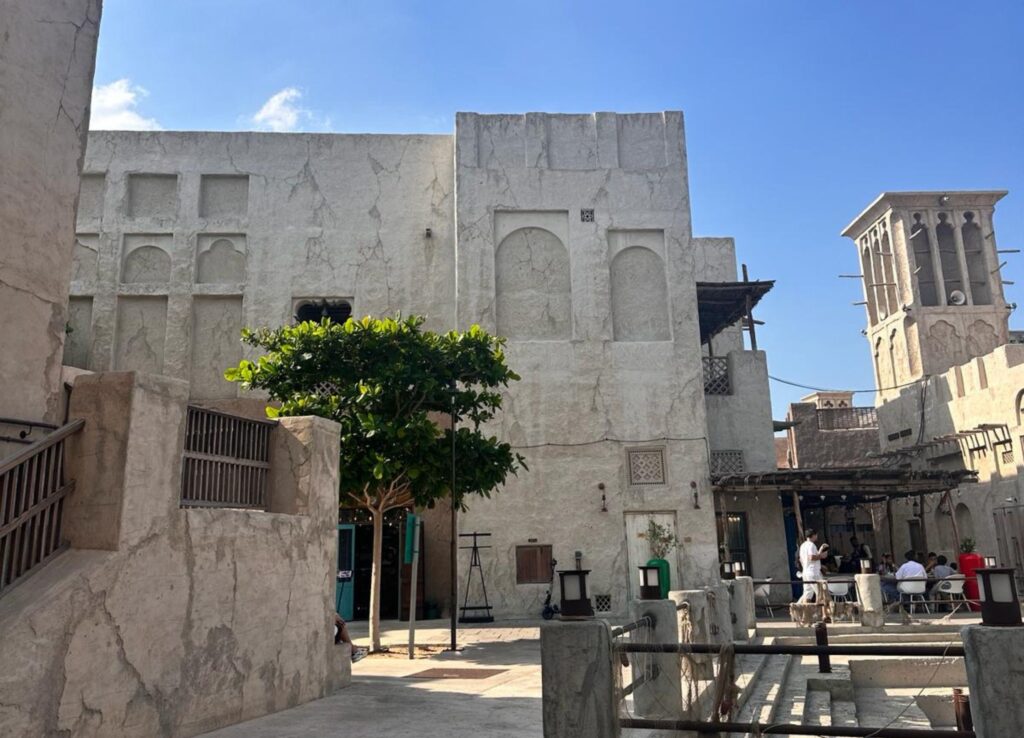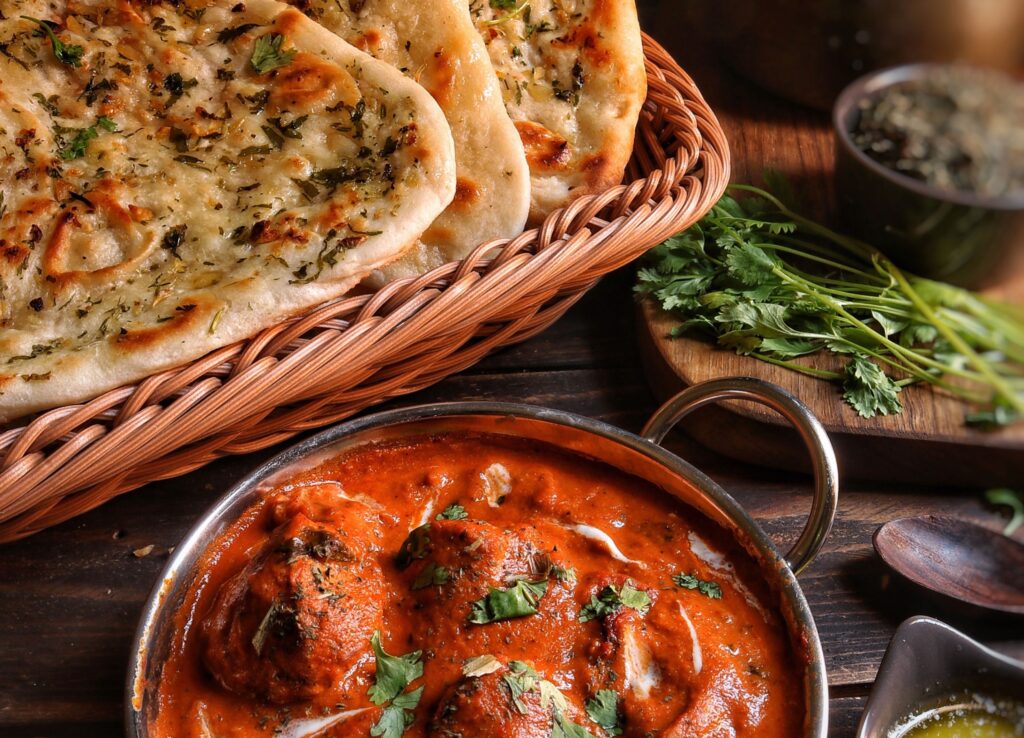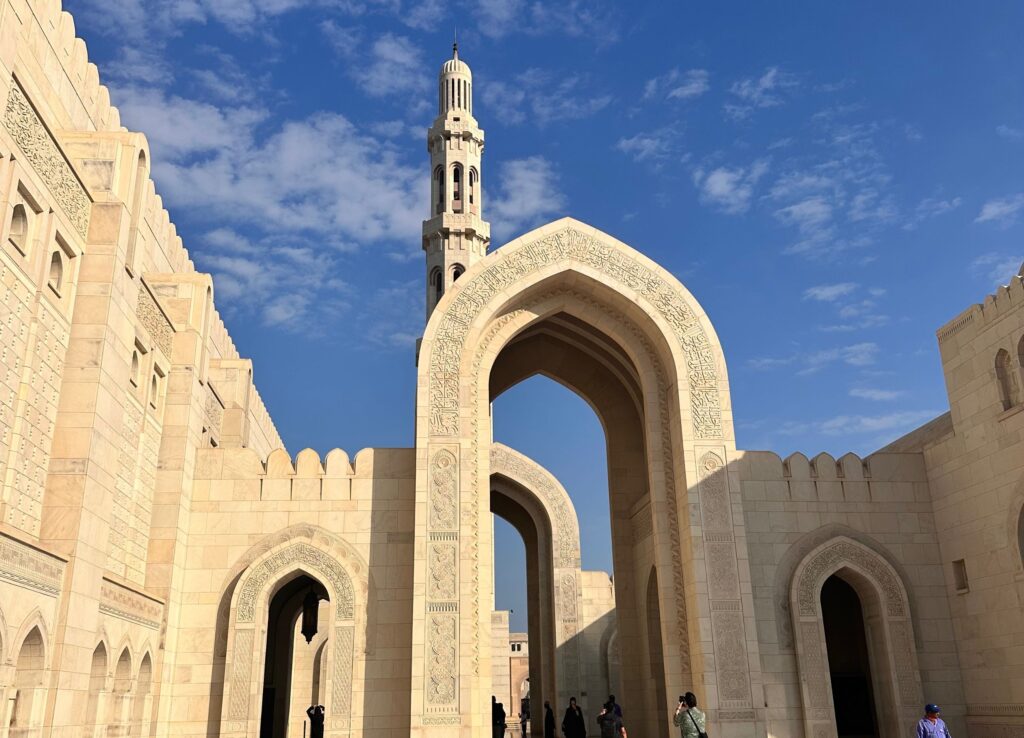Introduction to Train Travel in India
Embarking on a train journey in India is like opening a book filled with diverse stories and vivid imagery. Train travel is an integral part of experiencing the vast cultural and geographical variety that makes up this incredible country.
With a history dating back to the British colonial era, the Indian railway network has evolved into one of the world’s largest and most intricate systems, connecting remote villages to bustling metropolises.
Each journey promises not only a physical voyage but also a deep dive into the heartbeat of India’s dynamic life. From the hustle and bustle of crowded city stations to the serene landscapes whizzing by, every train ride is a unique narrative, offering insights into the daily lives of the people, the rich heritage, and the natural beauty of India.
But now let’s answer how to travel India by train! One last thing: don’t miss out on our other posts about this amazing country.
- Introduction to Train Travel in India
- Most Scenic Routes for Train Travel in India
- Why Choose Train Travel in India?
- Understanding Train Travel in India
- Booking Train Tickets in India Step-by-Step
- Practical Tips for Train Travel in India
- Safety and Security on Indian Trains
- Food and Facilities on Indian Trains
- FAQ about Train Travel in India
- Conclusion About Train Travel in India
Don’t want to travel alone to India and do a fully guided tour instead? Check out Tourhub, a platform offering guided tours all around the world. Do not forget to use my code SALLY1GURU for a 5% discount.
Most Scenic Routes for Train Travel in India
India’s vast and varied landscape makes for some of the world’s most scenic train journeys. Each route is a testament to the country’s natural beauty and an opportunity to witness its cultural diversity firsthand.
The Darjeeling Himalayan Railway
Also known as the ‚Toy Train,‘ this narrow-gauge railway is a UNESCO World Heritage site and offers one of the most picturesque train journeys in India. As it meanders through the rolling hills and lush tea plantations of West Bengal, passengers are treated to stunning views of the Eastern Himalayas, including the majestic Kanchenjunga peak.
The journey, starting from New Jalpaiguri to the charming hill station of Darjeeling, is a mesmerizing experience, taking you back in time with its vintage steam locomotives and quaint hillside towns.
The Konkan Railway
This route is a marvel of engineering and natural beauty, stretching along the Konkan coast of India. Linking Mumbai and Mangalore, the journey traverses through the untouched beauty of the Western Ghats, with tunnels, bridges, and viaducts adding to the thrill.
The train hugs the coastline, offering spectacular views of the Arabian Sea, verdant landscapes, and cascading waterfalls, especially during the monsoon season. It’s a journey that showcases the diverse ecosystems and geography of India.
The Palace on Wheels
For a taste of luxury and royal heritage, the Palace on Wheels offers an unforgettable journey through the heart of Rajasthan. This luxury tourist train, designed to replicate the royal trains of the Maharajas, takes passengers on a grand tour of some of India’s most majestic cities, including Jaipur, Udaipur, and Jaisalmer.
The opulent interiors, exquisite dining experiences, and world-class service make this journey a once-in-a-lifetime experience, where you travel not just across distances but through the pages of history.
These routes not only connect destinations but also weave a tapestry of India’s natural wonders and historical grandeur, offering a window to the soul of this fascinating country.
Why Choose Train Travel in India?
Choosing train travel in India is a decision to immerse oneself in the essence of the country’s diverse cultural and geographical landscape. The Indian railway system, an engineering marvel that has stood the test of time, offers an unparalleled window into the heart of India’s multifaceted identity. It’s a journey that goes beyond mere sightseeing; it’s about living and breathing the Indian experience.
The trains in India are more than just a means of transportation; they are moving microcosms of Indian society. Each compartment is a melting pot of languages, customs, and traditions, reflecting the country’s pluralistic society.
Whether it’s the lively conversations with local travelers, the sharing of homemade foods, or the views of changing landscapes, each element adds to the rich tapestry of experiences that train travel in India offers.
Moreover, Indian trains traverse through some of the most breathtaking and remote areas, inaccessible by other means of transport. They skirt along coastlines, wind through mountains, cross rivers, and navigate dense forests, offering views that are as diverse as they are stunning.
From the verdant greenery of the South to the arid deserts of the West, and the snowy peaks of the North to the tribal lands of the East, trains take you through varied terrains, each with its unique allure.
In essence, train travel in India is not just about reaching a destination but also about embracing a journey that’s filled with discovery, diversity, and the warmth of human connections. It’s an adventure that captures the spirit of India in its truest form.
Understanding Train Travel in India
Navigating the Indian Railways, an expansive network that’s both fascinating and daunting, requires an understanding of its diverse train classes and types. This vast system caters to the needs of millions, offering various options to suit different preferences and budgets.
Trains classes
The classification of train classes in India is a reflection of its societal structure, catering to every stratum of the population. At the top end, there’s the First AC (1AC), offering a luxurious experience with spacious, air-conditioned compartments, privacy, and often meals included. It’s the closest you’ll get to a hotel room on wheels.
The Two-Tier AC (2AC) and Three-Tier AC (3AC) are slightly less luxurious but offer air conditioning and more privacy than lower classes. For budget travelers, the Sleeper Class (SL) provides non-air-conditioned, but comfortable sleeping berths. The unreserved Second Class is the most economical option, generally crowded, and without guaranteed seating, reflecting the hustle and bustle of Indian life.
Make sure to go with 1AC or 2AC for long distances and 3AC or SL for short distances! You can absolutely dismiss the experience in traveling second class! 😂
Types of Trains
The Indian Railways operates various types of trains, each serving a different purpose. The Rajdhani and Shatabdi trains are among the fastest and most prestigious, connecting major cities with significant destinations, offering air-conditioned coaches and meals.
Express and Superfast trains are the backbone of long-distance travel in India, connecting distant regions with reasonable speed and comfort.
For regional connectivity, Passenger and Local trains are widely used, though they are slower and usually crowded. Unique to the Indian landscape are Luxury Trains like the Palace on Wheels and the Maharajas‘ Express, which offer an insight into the opulent lifestyles of Indian royalty, blending luxury with cultural and historical experiences.
Understanding these classes and types is crucial for planning your journey, as it directly impacts your travel experience. Each class and train type offers a different glimpse into the fabric of Indian society, from the luxury of 1AC to the vibrant energy of the unreserved compartments.
Choosing the right class and train can make your journey comfortable, enjoyable, and a true immersion into the cultural diversity of India.
For seamless travel across India, consider using 12AsiaGo and Busbud to book your transportation. Click either on the links or use the 12AsiaGo tool down below for quick searches!
Booking Train Tickets in India Step-by-Step
Booking train tickets in India can seem complex, but with the right guidance, it becomes a straightforward process. Here’s a detailed step-by-step guide to help you navigate the booking system efficiently:
1) Choose Your Platform: The most common way to book train tickets in India is through the Indian Railway Catering and Tourism Corporation (IRCTC) website. It’s the official online portal for the Indian Railways.
Alternative options include third-party websites like 12AsiaGo or MakeMyTrip, which might offer a more user-friendly interface for international travelers.
2) Create an Account: To book tickets through IRCTC, you need to create an account. This requires some basic information and verification, including an Indian mobile number. For international travelers, certain third-party sites may not require an Indian number, making the process easier.
3) Plan Your Journey: Before booking, have a clear itinerary. Know your departure and arrival stations, dates, and preferred train class. The Indian Railways operates several trains across various routes, so having a clear plan is crucial.
4) Check Train Availability: Once logged in, use the ‚Train Between Stations‘ option to find available trains for your route. You can filter results based on travel class, departure times, and other preferences.
5) Understand Ticket Types: Train tickets in India come in several types – Confirmed (you have a guaranteed seat), RAC (Reservation Against Cancellation, meaning you are likely to get a berth if there are cancellations), and Waitlisted (no guarantee of a berth). It’s important to understand these types to manage your expectations.
6) Book Your Ticket: After selecting your train and class, proceed to book your ticket. Fill in passenger details, including names and age. International travelers might have to provide passport numbers.
7) Make Payment: Complete the booking by paying through one of the multiple payment options available, including credit/debit cards and online banking. International travelers should check if their cards are accepted beforehand.
8) Ticket Confirmation and PNR Number: Once the booking is complete, you’ll receive a PNR (Passenger Name Record) number. This number is crucial for tracking your booking status and for any future communications regarding your journey.
9) E-Tickets and Paper Tickets: IRCTC provides e-tickets that can be printed or displayed on your mobile device. Some tickets, especially those booked through third-party sites, might require exchanging e-tickets for physical tickets at the station.
10) Advance Booking: Tickets can be booked up to 120 days in advance. Considering the high demand for train travel in India, it’s advisable to book as early as possible, especially during peak travel seasons or for popular routes.
Following these steps will ensure a smooth booking experience, preparing you for an exciting journey through the diverse landscapes and cultures of India. Also make sure you downloaded several apps like Confirmtkt or Where is my train for up-to-date information.
In case you have an Indian sim card, send an SMS to „139“ with your PNR for detailed train information. If you do not have a sim card, make sure to get an esim with Airalo! Use the tool down below and get an eSIM today:
Practical Tips for Train Travel in India
Navigating the Indian Railways efficiently requires a blend of preparation and adaptability. Here are some essential tips to enhance your train travel experience in India:
Light Luggage: Traveling light is key. Space is limited, especially in Sleeper and General classes. Soft bags are preferable as they can be tucked into smaller spaces. You want to know more how I travel with carry-on only? Read here!
Layers of Clothing: Due to varying temperatures inside AC coaches and the changing climates across different regions, it’s advisable to carry layers of clothing.
Essentials Kit: Include a small pillow, a light blanket (in non-AC classes), earplugs, a sleep mask, and a small lock for your luggage.
Hygiene Supplies: Hand sanitizer, wet wipes, toilet paper, and a small towel are must-haves, considering the varying cleanliness of train toilets.
Train Schedules and Seat Availability: Check the Indian Railways website for up-to-date schedules and seat availability. Familiarize yourself with the layout and the search functionality for a smoother experience.
Fare Enquiries: Use the fare enquiry feature to budget your trip effectively, available on the Indian Railways website and third-party platforms.
By following these tips, you can ensure a more comfortable and enjoyable train journey in India, experiencing the charm and challenge of Indian railways with confidence and ease.
Safety and Security on Indian Trains
Ensuring safety and security during train travel in India is crucial, especially for international travelers and those unfamiliar with the local environment. Here are key tips to help you maintain safety and peace of mind:
General Safety Measures
Stay Aware of Your Surroundings: Always be conscious of your environment, especially in crowded stations or trains. Keep an eye on your luggage and avoid displaying expensive gadgets or jewelry prominently.
Use Luggage Locks: Secure your bags with good-quality locks. If possible, chain your luggage to the racks, especially in sleeper classes during overnight journeys.
Trust Your Instincts: If a situation or an individual seems unsafe or uncomfortable, trust your instincts and move away. Don’t hesitate to change seats or alert the train staff if needed.
Secure Your Space: If sleeping, ensure your bags are secured and use a small lock for your compartment if in a first-class AC coach.
Keep Valuables Close: Keep your valuables like passport, money, and phone in a secure, close-fitting bag or pouch while sleeping.
Safety for Solo and Female Travelers
Choose Your Class Wisely: Opt for higher classes like AC tiers for added security and comfort. They are generally less crowded and have better security features.
Secure Your Berth: If you are in a sleeper class, try to secure an upper berth for added safety, especially for overnight journeys.
Be Cautious with Strangers: While many travelers are friendly and helpful, it’s wise to be cautious in sharing personal information or plans.
Dress Conservatively: To avoid unwanted attention, dressing conservatively is advisable, especially for solo female travelers.
By adhering to these safety guidelines, you can significantly reduce risks and enjoy a more secure and comfortable journey on Indian trains. Ensure a worry-free journey by securing comprehensive travel insurance with VisitorsCoverage.
Travel with confidence, knowing that you’re protected against unexpected events, allowing you to focus on creating lasting memories.
Food and Facilities on Indian Trains
Onboard Catering and Dining Options
Food Service: Many long-distance trains in India offer pantry car services, providing meals and snacks. The menu typically includes Indian cuisine, with vegetarian and non-vegetarian options. On premium trains like Rajdhani and Shatabdi, meals are included in the ticket price.
Vendors and Local Delicacies: At various stations, local vendors sell regional specialties and snacks. It’s a great way to sample local flavors, but always be cautious about hygiene.
Pre-Ordering Meals: For certain trains, you can pre-order meals online through apps or websites like ‘e-Catering’ by IRCTC. This service offers a wider variety of food options, including from well-known restaurant chains.
Carrying Your Own Food: You are allowed to bring your own food on the train. Many passengers opt for this to ensure they have food they are comfortable eating.
Toilets and Washrooms
Types of Toilets: Most trains have both Western-style and Indian-style (squat) toilets. The cleanliness can vary, so carrying your own toilet paper and hand sanitizer is recommended.
AC Coaches: Toilets in AC classes are generally better maintained than in non-AC classes.
Bedding and Comfort
Provided in AC Classes: In overnight AC classes, bedding is provided, which includes clean sheets, a pillow, and a blanket.
Non-AC Classes: In Sleeper Class, passengers usually bring their own bedding or sleeping bag.
Charging Points and Connectivity
Charging Facilities: Most trains, especially in AC coaches, provide charging sockets for mobiles and laptops.
Internet Connectivity: While some premium trains offer Wi-Fi, it’s not widely available across the network. It’s advisable to have a local SIM card with a data plan for internet access.
By understanding the food and facilities available on Indian trains, you can better prepare for your journey and enjoy the diverse culinary experiences and amenities that Indian rail travel has to offer.
FAQ about Train Travel in India
Conclusion About Train Travel in India
As our comprehensive guide to train travel in India comes to a close, it’s clear that journeying across this huge country by train is an experience in itself. Indian trains offer a unique window into the country’s soul, where every journey tells a story and every landscape reveals a new facet of India’s diverse beauty.
For travelers seeking a deeper understanding of India, its people, and its culture, train travel is indispensable. It challenges, charms, and enlightens, offering an unparalleled way to explore the country’s geographical and cultural richness.
We hope this guide serves as a valuable companion in planning your train adventures in India. Make sure you do not miss our full travel guide and get more info about when’s the best time to travel to India.
Do not forget to follow me on my socials and stay updated on our adventurous world trip and get some more travel inspiration!
I hope to see you again soon on this blog. Do not forget to share this guide on train travel in India with your friends and family too 🙂





